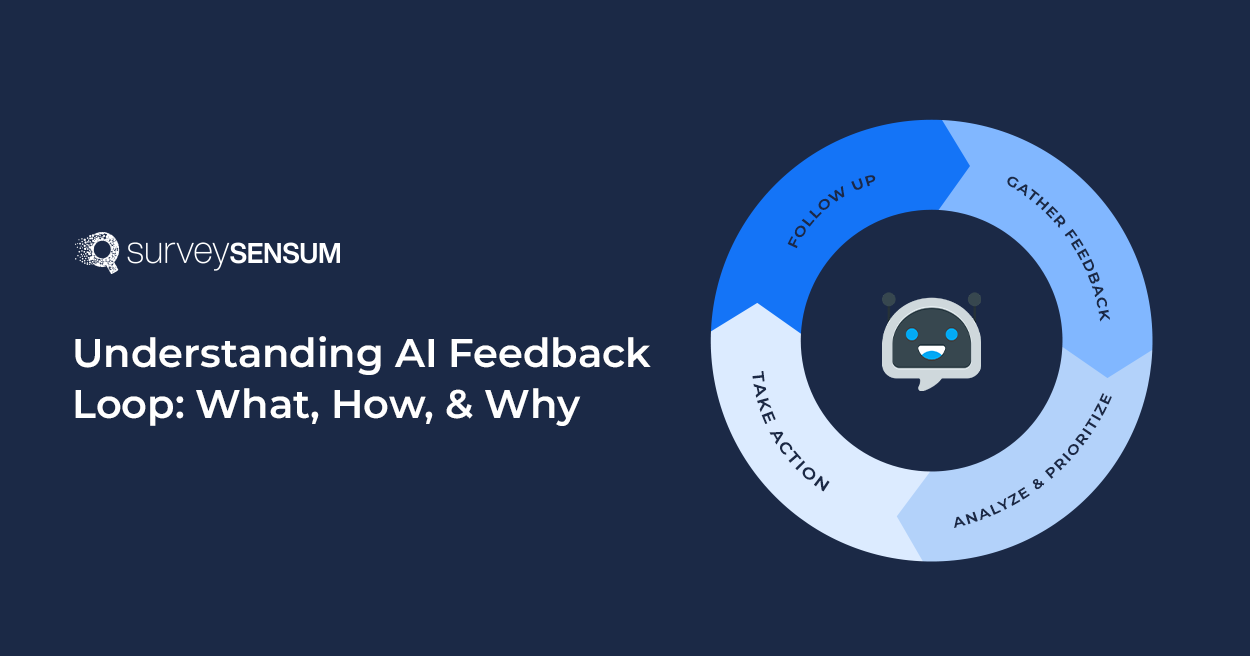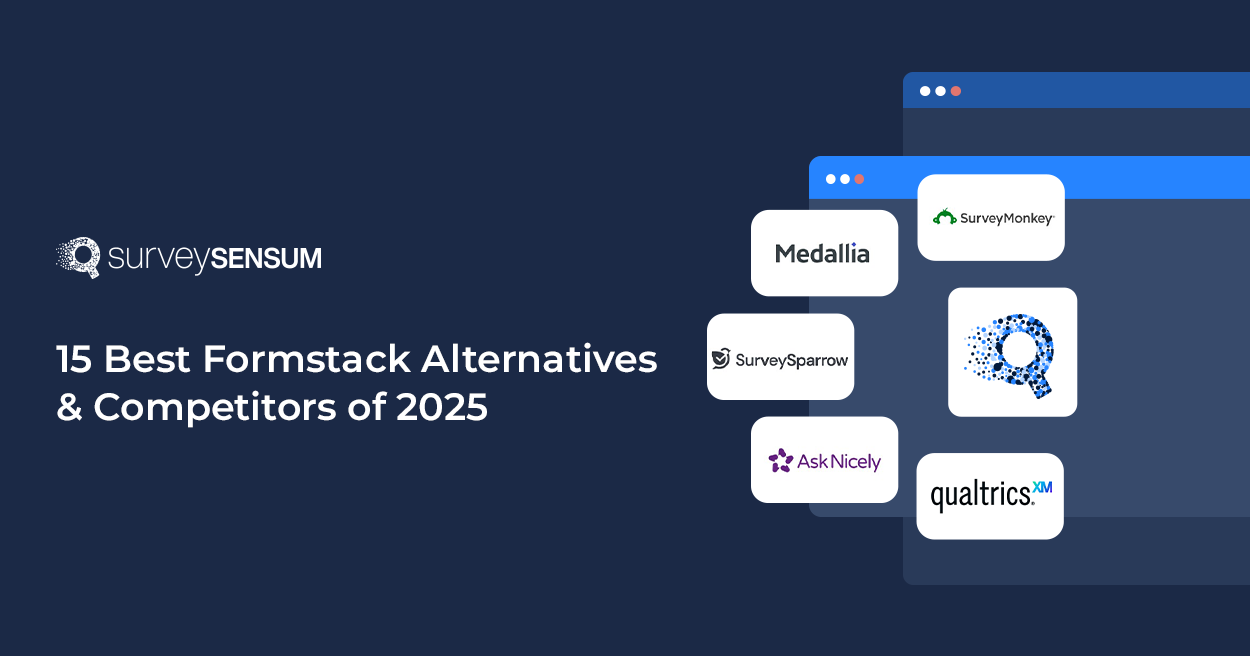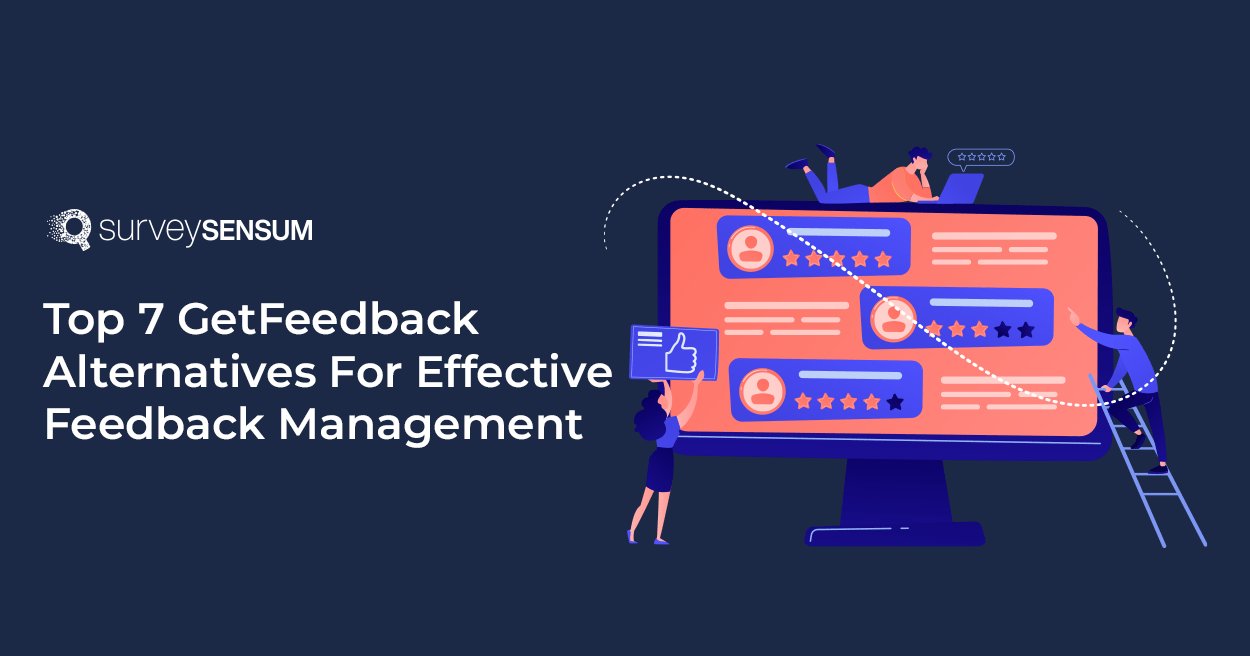
Ever wondered how companies like Netflix or Amazon seem to always know exactly what you need, your expectations, even before you do?
The magic lies in the AI feedback loop – a complete game changer in the world of feedback analysis. This AI capability enables businesses to analyze your feedback to extract actionable insights, understand customer sentiments, and even gauge their emotions.
But wait, the AI feedback loop is not just for data collection and analysis – it is a learner and has a brain of its own. It can sift through data, and learn from every piece of feedback to improve your business constantly. It is a system that not only listens but evolves itself with every interaction, ensuring that the voice of your customer shapes the products and services you provide.
So, how does it work, and how do you leverage it to your benefit? Let’s scroll down and find what.
What is the AI Feedback Loop?
The AI feedback loop is a continuous process that uses AI capabilities to collect, analyze, and learn from customer feedback to establish a system of continuous cycle of improvement and deliver a more relevant and accurate action plan. It is a closed-loop system where AI goes through every piece of data and learns from it.
Here’s how it works:
- Data Collection: Customer feedback can come from multiple sources and with the help of AI capabilities, it can be gathered from multiple sources like social media reviews, email surveys, customer interactions, external databases, etc. This omnichannel data collection provides a streamlined process without switching to multiple apps.
- Data Analysis: With the help of AI capabilities like NLP, open-ended feedback can be interpreted effectively. This analysis not only breaks down textual data but also helps you identify the top emotions, sentiments, and patterns of customers which will help you better understand their pain points, needs, and expectations.
- Generates Reports: Not only does the system help you gather and analyze feedback with AI capabilities, but it also generates detailed and analytical reports that will help you visualize your data and share them with your team and stakeholders.
- Learns and Improves: The AI algorithms are continually trained on the incoming data, allowing them to adapt and refine their models. This learning process involves updating the algorithms to improve accuracy and relevance.
Leverage AI capabilities like text and sentiment analysis, model learning, machine learning, etc to improve and streamline your feedback management.
Now, how to use feedback loop AI for customer feedback management? Let’s see.
AI Feedback Loop for Customer Feedback Management
With an AI builder feedback loop, you can go beyond simply analyzing data. Here’s how it works.
1. Sentiment and Emotion Detection

The AI feedback system utilizes NLP algorithms to not only analyze textual data but also determine the sentiment behind every piece of feedback. It categorizes feedback into different emotion segments like happy, angry, or neutral. With the help of this detection, you can identify recurring themes and patterns in the feedback to highlight common pain points or areas of satisfaction.
2. Actionable Insights

Based on the analysis, the AI system generates a report on what action needs to be taken along with some recommendations. It identifies recurring themes, patterns, and areas of improvement. It also does an impact analysis so that you can get a report on which aspect is impacting more and can get prioritized action that will impact your bottom line.
For example, the “user interface” was reported by 32 customers out of 100 however 55 customers left negative feedback on the “product price”, so naturally product’s price needs more attention.
3. Implementation and Monitoring
After the analysis is done and the report is generated, now it’s time to take action. Act on AI-generated insights and recommendations, making changes to products, services, or processes. This could involve fixing bugs, adding new features, or enhancing customer support.
However, the job is not quite finished. After implementing the changes, closely monitor the impact. This involves tracking KPIs such as customer satisfaction scores, customer retention rates, and engagement levels. Also, don’t forget to close the loop by asking for feedback from your customer on the implemented changes. This helps you evaluate your effort and whether or not it worked.
4. Close the Feedback Loop

The whole purpose of adding AI to feedback management is to create a system of continuous learning and improvement and establish a closed-feedback loop system with the customers where customers are well aware of what changes are happening.
The AI system analyzes the impact of the implemented changes by keeping track of incoming customer reviews or feedback across multiple channels to see if customer sentiments have changed over time.
Now based on the evaluation, the AI system learns from this data, refining its models and improving its ability to detect sentiments and generate accurate insights. With each cycle, the system becomes smarter, which enables you to get more precise actionable insights. This leads to continuous improvement in products, services, and customer experiences.
Conclusion
AI feedback loop provides a streamlined framework for managing customer feedback. By establishing a continuous system of data collection, data analysis, and learning from customer data, you can enhance your product and service and deliver a positive customer experience.
However, establishing an AI feedback loop also requires robust customer feedback management software, like SurveySensum, that has all the required AI capabilities like NLP, model learning, text analysis, etc. It also ensures a streamlined and integrated system that ensures you don’t have to switch between different tools or apps for different tasks.















